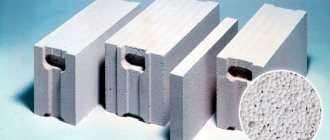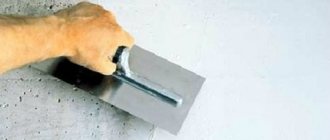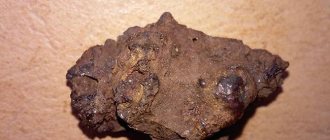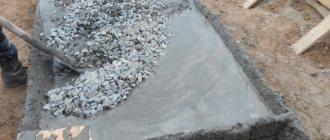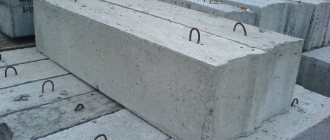The density of asphalt concrete varies depending on the type of material, and has a direct impact on certain physical and mechanical characteristics of the coating. For most asphalt concretes, higher density means higher strength, but there are exceptions. At the same time, laying asphalt must always be accompanied by high-quality compaction.
“For those asphalt concrete mixtures that contain rocky filler (crushed stone or gravel), high density correlates with high strength and some other indicators. However, this rule does not apply to sandy asphalt - despite its very high density, its quality characteristics will be inferior to stone-based asphalt concrete.”
The density of asphalt concrete in a compacted state is expressed in the indicator “residual porosity” - the lower it is, the higher the density of the coating. And the density of the uncompacted mixture is determined based on the mass per cubic meter.
In stone-based asphalt mixtures, various fractions of stones can be used. Thus, fine-grained mixtures have a higher density than coarse-grained mixtures. In this case, the voids between the fractions are filled with special fillers, as well as bitumen binder.
Categories of residual porosity of asphalt concrete
“Residual porosity is the percentage of pore volume relative to the total volume of compacted asphalt concrete”
| Category | Residual porosity, % |
| High density | from 1 to 2.5 |
| Dense | from 2.5 to 5 |
| Porous | from 5 to 10 |
| Highly porous | from 10 to 18 |
As mentioned, today there are 4 categories based on the residual porosity of the material.
More porous coarse-grained
asphalt concrete is used to construct the underlying coating layer. They promote shock absorption and also aid in stabilization.
Dense fine-grained
asphalt mixtures are laid as the top layer, as they have high strength, wear resistance and moisture insulation.
Recognition of quality
Reviews and letters of gratitude from clients and partners
Arusanov S.V. General Director of OSZ LLC
Bubolev V.A. General Director of LLC PIK Terminal Mospromstroy
Stepanyan Sh.G. General Director of JSC "Mospromstroy"
Tsarikaev A.R. Head of the Lefortovo district administration
Kazakov V.Yu. Commercial Director of ANO DPO "UC ITC Expert"
Density of asphalt concrete as specific gravity per cubic meter
The density of asphalt concrete, in addition to the size of the stone filler fractions, can be influenced by several other factors, for example, the type and proportion of the main component or the type of bitumen binder. Due to this, different types of asphalt concrete mixtures have different densities.
For example, modern crushed stone-mastic asphalt concrete will be 90-100% denser than classic asphalt mixtures. This is due to the fact that previously asphalt production was carried out without the addition of durable crushed stone, modern modifiers, and also using conventional petroleum bitumen.
Advantages of ASFALTSTROY
- Reputation as a reliable partner since 1949
- Highly qualified personnel
- Modern installations made in Germany
- Certified testing laboratory
- High-quality materials and raw materials
- Product quality control at all stages of production
- Certified products
- Convenient logistics location of the plant
- 24/7 operation
Density of asphalt concrete per 1 m3
| Name | Density per cube |
| Classic Blends | ~1100-1500 kg per m3 |
| Crushed stone-mastic asphalt concrete | ~2560-2570 kg per m3 |
| Coarse mixtures | ~2380-2450 kg per m3 |
| Fine grain mixtures | ~2400-2460 kg per m3 |
| Sandy asphalt concrete | ~2340-2450 kg per m3 |
| Asphalt crumbs | ~1500-1900 kg per m3 |
Relevant only for uncompacted asphalt concrete mixtures. As a rule, manufacturers of asphalt concrete mixtures indicate the density of the material in the accompanying documents or on the packaging (if available).
From this we can conclude that the average density of asphalt concrete (modern) is about 2.4-2.5 tons per 1 cubic meter. However, such indicators will only be provided that the asphalt concrete meets modern quality standards and the requirements of regulatory documentation. If there are disturbances in the production process, the characteristics of the material, including density, can become significantly lower.
Briefly about the asphalt concrete manufacturing process
The quality standard for asphalt concrete - GOST 9128 97 involves the following stages of preparing the finished mixture:
- The first step is to assess the quality of the raw materials, which is extremely important. After all, the quality of the future mixture, or, more precisely, its main characteristics, largely depends on this.
- At the next stage, the aggregate is processed. It is crushed to the required fraction.
- Next, the components are sent to a hopper equipped with a heating function. There, under the influence of elevated temperature, excess moisture is evaporated and the binder component is heated.
- Next, all components are sent to the mixer, where they are thoroughly mixed. During the process, excess air is removed and the mixture acquires the required consistency.
- At the last stage, the finished product is fed into silos intended for storage.
Then, the finished product is subjected to quality control by checking its performance.
Note! When producing asphalt concrete mixtures, it is necessary to use specialized equipment, so making it yourself is not possible. However, if you have a small budget asphalt plant, it is quite possible to organize a small-scale production for the purpose of subsequent sale. The price of the material is quite stable, so profits will be guaranteed.
How does compaction affect the density of asphalt concrete?
Even if the asphalt concrete mixture initially has a high density, improper or insufficient compaction after placement will result in high porosity of the pavement. This, in turn, will entail a decrease in the physical and mechanical properties of the material, as well as its service life.
For example, in the construction of highways, the principle of multi-layer laying of asphalt mixtures is used. In this case, each layer must be compacted separately, otherwise high density will not be achieved.
What indicators fall due to poor-quality asphalt compaction:
- Strength;
- Wear resistance;
- Resistance to horizontal deformation;
- Resistance to rutting;
- Moisture insulation;
- Resistance to high and low temperatures;
- Life time.
In fact, poor asphalt compaction leads to premature failure of the pavement, which entails other negative consequences.
conclusions
What you need to know about asphalt density:
- The density of compacted asphalt is expressed in residual porosity - from 1 to 18% (the lower the better).
- The density of an uncompacted asphalt mixture is expressed in mass per cubic meter - on average about 2.4-2.5 tons per 1 m3
Different types of asphalt concrete have different density levels. At the same time, the density of asphalt concrete is an important indicator, on which a number of other operational characteristics of the material, as well as its service life, depend. To achieve high density, it is necessary to select the right asphalt concrete mixture, as well as to perform high-quality compaction after laying.
Basic control methods in accordance with GOST and acceptance rules
Like any other building material, asphalt concrete mixtures are subject to control and are subject to certain acceptance rules, which we will consider.
Material acceptance
The conditions for accepting a consignment of goods are as follows:
- When accepting a hot mixture, a quantity not exceeding 1200 tons is accepted as a batch. In this case, the batch must have the same composition. To be produced in one shift and on one equipment.
- A batch of cold mixture is taken as one in an amount of no more than 300 tons. It must also be characterized by the same composition and be produced in one shift.
- If the mixture is subsequently to be stored, it may be mixed with products of the same composition.
- When shipping goods to a consumer, products shipped to one buyer per day are taken as one batch.
- When transporting by water or rail, a batch is considered to be the number of products placed in one wagon or barge.
- The mixture is weighed using scales.
To control quality, periodic and acceptance tests are carried out.
Control is carried out according to the following indicators:
- Mixture temperature;
- Checking grain composition;
- Moisture saturation;
- Compressive strength;
- Water resistance (for hot mix);
- Checking the content of the binder component.
Repeated tests are carried out in accordance with the necessary requirements of GOST or when the technology or composition of the material changes.
Periodic tests include monitoring:
- Porosity of the mineral part and residual porosity;
- Water resistance with long-term saturation;
- Compressive strength with prolonged water saturation;
- Indicator of adhesion of bitumen to the mineral part;
- Uniformity of the material.
Each batch must be accompanied by a quality certificate, which contains the necessary information.
This:
- Name and location of the manufacturer;
- Batch number;
- Quantity of material shipped;
- Document date;
- Regulatory standard number;
- Brand, type, type of material;
- Water resistance;
- Caking;
- Compressive strength;
- Efficiency of radionuclides;
- Residual porosity of the mixture.
Testing of asphalt concrete
Using the table, let's look at the main testing methods for asphalt concrete.
Test methods:
| Name of the tested indicator | The essence of the control method |
| Volumetric mass (average density) |
|
| Specific gravity |
|
| Porosity of the mineral part of the composition |
|
| Residual porosity |
|
| Swelling |
|
| Compressive strength |
|
| Compound |
|
| Seal |
|
| Modulus of elasticity of asphalt concrete (dynamic) | Controlled by applying a load to the sample. In this case, the resistance and level of deformation of the material are measured. |



